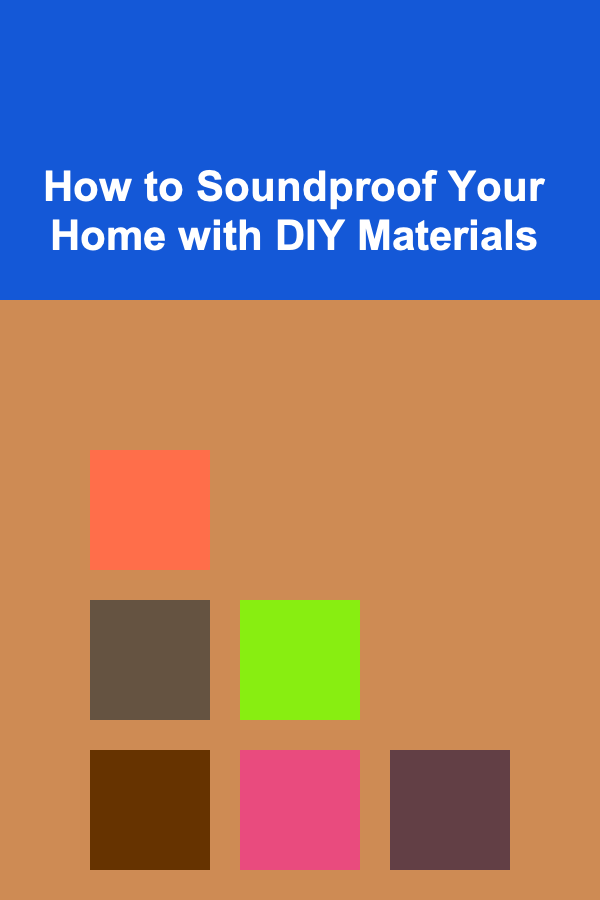
How to Solve the 4x4 Rubik's Cube: Beginner to Intermediate
ebook include PDF & Audio bundle (Micro Guide)
$12.99$11.99
Limited Time Offer! Order within the next:
Not available at this time

The 4x4 Rubik's Cube, also known as the Rubik's Revenge, offers a more complex challenge than the traditional 3x3 version. While the standard 3x3 cube has 6 center pieces that are fixed in place, the 4x4 cube has 24 center pieces that can move independently, adding a layer of complexity to the puzzle. If you have mastered the 3x3 cube and are ready to tackle the 4x4, this guide will walk you through solving it step by step. We will cover beginner to intermediate techniques, so you'll be able to confidently approach the 4x4 Rubik's Cube and eventually progress to more advanced solving methods.
The process of solving the 4x4 cube can be broken down into several key stages: solving the centers, pairing the edges, solving the 3x3 layer, and dealing with parity errors. By understanding and practicing these techniques, you'll gradually become proficient in solving the 4x4 Rubik's Cube.
Understanding the 4x4 Rubik's Cube
Before we dive into the solution steps, it's important to understand the structure and mechanisms of the 4x4 cube. Unlike the 3x3 cube, which has fixed center pieces, the 4x4 cube has 4 center pieces per face. This means that, during the solving process, you will need to deal with the centers independently. Additionally, the cube has 12 edges that are made up of two pieces each, which need to be paired up during the solving process.
The Parts of the Cube:
- Centers: 4 pieces per face, which can move relative to one another.
- Edges: Each edge consists of two pieces, and they need to be paired up.
- Corners: 4 corner pieces per face, just like in the 3x3 cube, and they don't move independently.
Now that we have a basic understanding of the cube's structure, let's break down the solving process into easy-to-follow steps.
Step 1: Solving the Centers
The first step in solving the 4x4 cube is to solve the centers. Since the centers are movable on a 4x4 cube, the first challenge is to align all four center pieces on each face of the cube to match their respective colors. This can be more challenging than it seems because the centers can rotate independently.
How to Solve the Centers:
- Choose a reference color: It's a good idea to start by solving one face's center, typically the white face.
- Solve one face's center: Begin by positioning the four white center pieces on the same face. To do this, you can use the edge pieces and corner pieces to maneuver the centers into place. Be careful not to scramble other centers as you adjust them.
- Solve the opposite centers: Once the white center is solved, you can move on to solving the opposite face's centers. This is usually the yellow face. Use a similar method to the white face to solve the yellow center.
- Solve the remaining centers: Now, move on to the remaining two center pairs, such as the red and orange, and green and blue centers. The goal is to match the centers in a manner that each face has its respective color center solved.
Tip: Use simple algorithms or moves that cycle the center pieces of one face without disturbing the others. The goal is to achieve a complete set of aligned centers.
Step 2: Pairing the Edges
Once the centers are solved, the next step is to pair up the edge pieces. On a 4x4 cube, there are 12 edges, each consisting of two edge pieces that must be paired together. This step is critical, as you cannot proceed to the 3x3 stage of solving until all edges are paired.
How to Pair the Edges:
-
Start with one edge pair: Choose an edge, say white-blue, and locate both the white and blue edge pieces. Use a combination of moves to pair these pieces together. This is done by moving the edge pieces out of the way and then re-aligning them so that they are together.
-
Edge pairing algorithms: Once you've located the two edge pieces that need to be paired, you can use algorithms to pair them together. These algorithms are designed to swap pieces and bring the two edge pieces to the correct location without disturbing other pieces.
Here's a common edge pairing algorithm:
- (Uu) (Ll) U (Rr) (Ff) Where:
- Uu = Upper face move (both layers)
- Ll = Left face move (both layers)
- Rr = Right face move (both layers)
- Ff = Front face move (both layers)
Repeat this process for each edge until all the edges are paired.
-
Check the entire cube: After pairing all the edges, check to ensure that no edges are left unpaired. A well-paired edge will not split when rotated, and all edge pairs should be aligned on the cube.
Step 3: Solving Like a 3x3 Cube
Once the edges are paired, the 4x4 cube essentially becomes a 3x3 cube. This means you can now apply the same techniques that you would use to solve a regular 3x3 Rubik's Cube.
Follow these steps to solve the cube:
- Solve the first layer: Just like the 3x3 cube, start by solving one layer. The white layer is typically chosen. First, make the white cross by matching the white edges with the centers and solving the white corners.
- Solve the middle layer: Once the white layer is completed, solve the middle layer by positioning the edges correctly. This involves positioning the edges and corners in their correct locations on the second layer.
- Solve the top layer: Finally, use standard 3x3 algorithms to solve the top layer, ensuring that the top cross is formed and the corners are aligned.
Step 4: Dealing with Parity Errors
One of the challenges that arises in the 4x4 cube is what is called a "parity error." This occurs when the last layer pieces are in an unsolvable position, and no normal 3x3 algorithm can fix the situation. There are two common types of parity errors:
- Edge parity: This happens when two edge pieces are flipped in the wrong direction, making it impossible to solve with a standard 3x3 algorithm.
- Corner parity: This occurs when one or more corner pieces are in the wrong orientation, which cannot be solved with typical 3x3 methods.
How to Solve Parity Errors:
-
Edge Parity: If you encounter an edge parity error, where two edges are flipped, you can use the following algorithm:
- (Rw) U2 (x') U2 (Rw) U2 (x) U2 (Rw') U2 Rw This algorithm will flip the two misplaced edges, and you can proceed with solving the cube.
-
Corner Parity: If you encounter corner parity, where the corners are twisted in the wrong orientation, use the following algorithm to fix it:
- (2R2 U2) 2R2 U2 2R2 U2 R2 This will correct the orientation of the corners.
Step 5: Finalizing the Cube
Once you've dealt with any parity errors, you should have a solved 4x4 Rubik's Cube. If you haven't encountered any parity errors, this step will simply involve completing the final layer using the standard 3x3 methods.
Conclusion
Solving the 4x4 Rubik's Cube can seem like an intimidating task, especially if you're accustomed to the 3x3 version. However, by following the steps outlined in this guide---solving the centers, pairing the edges, solving like a 3x3, and handling parity errors---you can gradually develop the skills and confidence needed to solve the 4x4 cube.
Remember, solving the 4x4 is a process that requires patience, practice, and a solid understanding of how the cube works. Start with the beginner tips and gradually build your skills. As you improve, you'll find that solving the 4x4 becomes more intuitive, and you'll be ready to move on to more advanced techniques.
With enough practice and persistence, you'll be able to solve the 4x4 Rubik's Cube with ease and speed, taking your puzzle-solving skills to the next level.

How to Integrate Outdoor Living Spaces in Your Home Renovation
Read More
How to Soundproof Your Home with DIY Materials
Read More
How to Use Wall Space for Effective Home Organization
Read More
Understanding the Environmental Impact of 3D Printing
Read More
How to Build a Mini Arcade Game with Arduino and an LCD Screen
Read More
10 Tips for Staying Motivated While Pursuing Your Financial Goals
Read MoreOther Products

How to Integrate Outdoor Living Spaces in Your Home Renovation
Read More
How to Soundproof Your Home with DIY Materials
Read More
How to Use Wall Space for Effective Home Organization
Read More
Understanding the Environmental Impact of 3D Printing
Read More
How to Build a Mini Arcade Game with Arduino and an LCD Screen
Read More